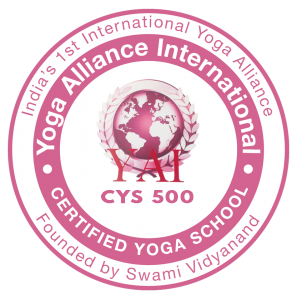Information


The path toward self-realisation is different for everybody. All individuals have their own unique character and personality with which they explore this physical world. Through the practice of yoga, one can gain a deeper understanding of themselves and get to know their true nature. The yoga journey is an everlasting exploration of the self through direct experience, devotion and dedication to the practice. The main aim of yoga is self-realisation or liberation of suffering caused by living in ignorance of the divine light that is within all. There are 4 main streams of yoga that can help one choose a path suitable to their own temperament. Although one may choose their main path, it is important to note that all 4 are apparent in the journey towards liberation/self-realisation.
Jnana yoga is most suited for those with an intelligent temperament. It is also called the yoga of wisdom or knowledge as self-realisation is achieved through the study of the self. In Jnana yoga, one of the primary aspects is viveka, the discrimination between what is right and what is wrong; of that which is reality and non-reality. The Jnana yogi is drawn to self-inquiry and finds their true nature through an intellectual approach of contemplation, questioning, learning and through direct experience. Choosing this path brings one to discover their true nature through meditation and self-understanding of the individual self being one with the universal consciousness, the Atman to Brahman. Some practices of the Jnana yogi include detachment or indifference to material objects, restraint or control of the senses and a deep desire to liberation.
Bhakti yoga is the path of devotion to the divine or the higher power. This is a path suited for those with an emotional temperament. Bhakti yoga leads to emotional maturity and an unconditional love for God. This devotional path involves practices such as chanting mantras, prayer, rituals and surrendering to the divine. Through the path of bhakti yoga, one learns to do everything with love, because they see the divine in everyone and everything. The Bhakti yogi seeks their true nature through complete surrendering and devotion to God.
Raja yoga is the path of self-control or will-power. The word raja means royal and this path is also known as “the royal path”. Raja yoga is most suited for those with a mystic temperament and it follows the Asthanga/Eightfold path by Pantaji. The last 3 limbs of Ashtanga are referred to as raja yoga, as they are the highest attained practices reached through the commitment and mastering the first 5 limbs, considered hatha yoga. The Raja yogi practices will-power and self-discipline through the hatha yoga practices such as yamas and nyamas, asana, pranayama, pratyahara. Through commitment to these practices, one can reach the highest raja yoga practices which refer to focus (dharana), deep concentration or meditation (dhyana) and finally a blissful state of self-realisation.
Karma yoga is the path of action and it is suited for those with an active temperament, who have an energetic nature for doing. Individuals choosing this way, learn to devote themselves to be of service with selfless action. This does not mean this is done on a voluntary basis, but with an intention to be of service for the greater good, and not for self-confidence or self-achievement. In karma yoga, one is of service for the self and the community independent of any ego driven desires or outcomes. In doing so, one learns to detach themselves from the ego by not seeking any reward or having any expectations. Karma yoga also helps to purify the heart and leads one to experience and practice compassion.